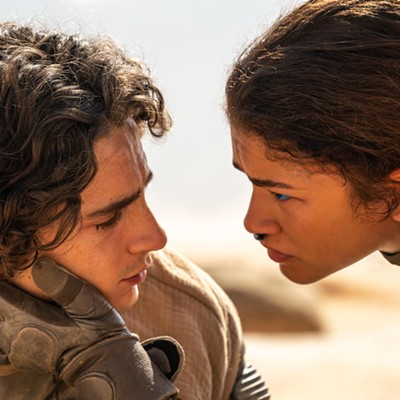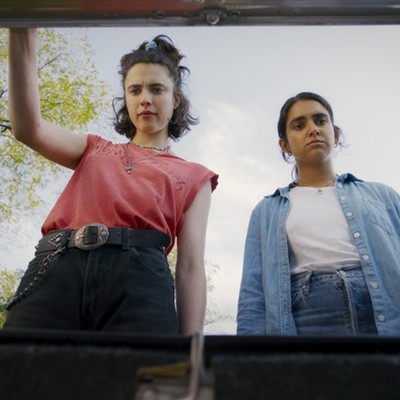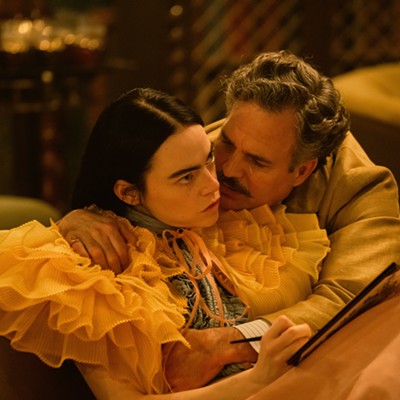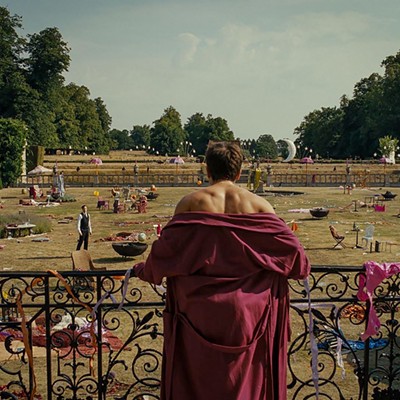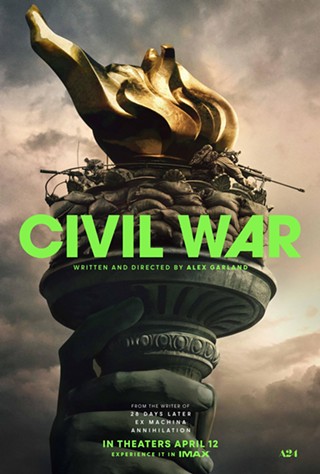If you're among those who think that the fashion industry is a pointless, self-important indulgence in which people with hopelessly warped ethical sensibilities mislead themselves about what should and should not be valued, The September Issue will do little to dissuade you. It might entertain you, though, and at least some of that entertainment comes at the expense of brittle martinet Anna Wintour, editor of Vogue, so the schaden is particularly freude.
This documentary, ostensibly about putting together the September 2007 issue of Vogue, begins with Wintour explaining that those who "say mean things about fashion" are just jealous because they are "not part of the cool group." So it's hard not to love her right off the bat. And with Wintour as the main character, it seems that The September Issue will be nothing but an exercise in hathos, that wonderful feeling we get from hating the hateable.
As fun as that might be, it would be a little cheap and easy, and director R.J. Cutler does grander things with his 90-minute documentary. Setting up Wintour as a sort of over-coiffed Bond villain, he uses her to explore not only the shallowness of the fashion world, but, more importantly, something about the possibility of art that arises there, and how it struggles against and with commercial instincts.
Inside the offices of Vogue are racks of clothes that, while ugly, have the benefit of being incredibly expensive. It's the job of Vogue's creative director, Grace Coddington, to oversee the photo shoots that fill the magazine's pages. Coddington, though, is no Anna Wintour. She's in her late 60s with an enormous mane of red hair, and she dresses like a Bedouin who's lost her headscarf, so she's an odd figure to find in the fashion world. What sets her apart is that, while everyone else is worrying about how to please Anna Wintour and how to find the next big thing, Coddington is creating art.
Her shoots are strangely thoughtful, and even though she's not holding the camera, she's clearly the artistic mind behind the pictures. In one scene, she creates lush, British romantic-style tableaux vivants; in another, stark 1980s neo-new wave; and in a third, she grabs the documentary cameraman and puts him into the shoot, creating an image of a model staring into his lens as they both fall through seemingly infinite space.
Coddington very much comes off as the hero, and Wintour the villain. In any documentary, it's best to assume that the director has twisted the real world via careful editing in order to create the narrative he wants, and so I'll assume that Wintour isn't quite as wretched as she's portrayed to be. (Notably, the nicest thing anyone says about her in the film is that "she's not warm and friendly.") In fact, she seems to be a loving mom to her college-age daughter, a lawyer-to-be who laughs at her mother's business, noting that the people at Vogue "act like fashion is life."
But other than the mother-daughter scenes, Wintour seems like the cartoon version of Cruella de Vil, only slightly less lifelike. Wrapped in furs (she's credited with bringing back fur, which is kind of like being credited with bringing back sweatshop labor) and made up to within an inch of her life, one could guess that she's trying very hard to orchestrate the effect she'll have in the film.
It's amusing, then, when she fails so badly, and the movie takes on Coddington as its protagonist. Coddington's no-nonsense clothing and her distaste for the celebrity consciousness that Wintour has brought to the fashion world would only make her a negative hero, but her aesthetic sensibility and pragmatic cunning make her worth rooting for. She says she'd be happy if she "never saw another celebrity," but she also notes that without an audience, her work is nothing, so she appreciates what Anna has brought to the table—or, if she doesn't appreciate it, she at least makes good use of it.
There's a colorful cast of secondary characters as well, the not-so-pretty people who do the grunt work in the fashion industry. While director Cutler gives them enough space to establish identities, he does something very different with the preternaturally beautiful models who buzz around and form the focus of the various scenes: These women are left almost mute, as though they were incomprehensible extraterrestrials.
Since a lot of the Vogue employees (including Coddington and Wintour) are former models, it would have been interesting if a little attention had been given to what they thought about while modeling, just as the stylists and assistants get to speak their minds to the camera. But maybe that's the point: The models are treated as hyper-adorable robots until such time as they grow old enough to no longer look good in a two-piece gold lamé muumuu.
Other than that oversight, and some repetitiveness as the deadline draws near, Cutler did an excellent job with that most difficult of tasks for the documentary filmmaker: creating a narrative, including a hero and a villain. Even if you have complete disdain for fashion, you might find The September Issue entertaining, and Coddington gives us reason to respect a world in which one passer-by effuses that Anna Wintour "is the most powerful woman in the United States."

